Watering your plants is one of the primary requisites if you have a lawn, garden, or landscaping. Just like the body needs water as nourishment, plants need it, too. Water helps in the process of photosynthesis, and is essential in the growth of your plants. To make watering an easier task, you can use sprinklers to water your lawn or even your garden.
It has been discussed below how different sprinklers function, along with their advantages and disadvantages. Furthermore, you will also get to know what the best time to water your lawn is and how best to accomplish the task.
Purpose for Watering
If you have a lawn, or if you talk about plants and gardens, the first thing that comes to your mind would undoubtedly be watering them. Yes, watering your lawn is a major task that greatly decides the health and beauty of your grass. You would totally agree that well-watered lawns are the ones that gave birth to the term “lush green”. So, you need to water your lawn to keep up the greenery and beauty of it.
Water is a nutrient that helps plants stay in a good shape and carry out important processes. Two of the most important ones are respiration and photosynthesis. To help them carry out these functions properly, you need to water your plants regularly.
While watering your lawn is really important, you also need to make sure you don’t overdo it. You need not create a mud puddle to ensure that your plants are getting enough water. Being well aware of how water is an important resource for all living beings, you should save up water and only use required amount. Also, you should avoid watering your lawn frequently in droughts. On an average, plants do well when watered twice a week.
Types of Sprinklers
Sprinklers save you the task of manual watering and make taking care of the lawn easy for you. And when you talk about sprinklers, this much information isn’t all that you need. There are so many types of sprinklers with their own advantages and disadvantages; you really need to be educated before you decide to settle for a certain one. Here’s a list of the sprinklers with a brief description.
Rotary Sprinkler
These types of sprinklers have several arms and the sprinkler heads rest at the ends of these arms. Using the pressure of water, the gears rotate the arms and spray water rotating 360 degrees. These water sprinklers are seen to give the largest range of water distribution. They are cost efficient compared to in-ground sprinklers.
The benefits of using a rotary sprinkler are that the jets and bases are adjustable and it gives an even distribution. These sprinklers conserve water efficiently and are good for low-growing plants. One disadvantage that these sprinklers have is- you cannot be selective in watering. Whatever comes in their way gets watered. Only about 75 percent of water coming from them makes it to the soil. The rest of it either gets intercepted by foliage, or evaporates.
Pulsating Sprinkler
Pulsating sprinklers have a rotating head in the top that spews water in a pulsating manner. The sprinkler covers a circular area or maybe a portion of it. They cost about $7 to $8. You can further look for quality pulsating sprinklers that have zinc and brass sprinkler heads, and ones with an adjustable fineness of spray.
The key benefits of getting a pulsating sprinkler installed are that it can cover a large area that is curved, rounded, or irregular in shape. It doesn’t cause puddles and waters gently. But it can be a bit of menace for you since these sprinklers make a lot more noise compared to others. They can’t work under low pressure and if you are looking for a rectangular coverage, they will fail at it.
Stationary Sprinkler
These sprinklers have holes along the sprinkler head which help in spraying water. They come in a variety of shapes, sizes, and designs to let you have the liberty of choice. They are considered inexpensive, since they are ideal for a small lawn.
The benefits that these sprinklers offer are that they are very cheap, are stationary and unbreakable, great for a small area, and can work in low pressure. But they are not at all good for large areas, and cause puddles if left in one area. Also, if left unchecked, they might cause wastage of water.
Sprinkler Hose
Sprinkle hoses are really tiny flat hoses that are perforated. They can be used in two ways. If you keep them upright, they act as gentle sprinklers while they go on a soaking action if reversed. They can be used to water long and narrow areas even if they are uneven grasses. They are flexible and can extend over the entire lawn like pipes. These can be joined with other sprinklers if you want them to cover great areas.
Traveling Sprinkler
These are sprinklers on wheels that roll through the lawn on gear-driven wheels using a garden hose and are water pressure-powered. After you are done setting it up, it covers a large area without needing your supervision. They cost around $50.
The benefit of using these sprinklers is that they water evenly and deeply. They work really well on large lawn areas. But the disadvantage is that it won’t work unless there is sufficient water pressure. Also, your lawn has to be hard and even to keep traveling.
Oscillating Sprinkler
Oscillating sprinklers use tubes made generally of plastic or aluminum supplying wide fan spray by moving back and forth. They reach up to 20 to 30 feet. They typically cost around $10 to $30. The more expensive ones come with more flexibility in fine-tuning the spray pattern.
The benefit of using these sprinklers is that you can adjust them to water both large areas as well as small areas. You can water landscaping flowers and plants. But since there is a high spray, the water can evaporate when it is too warm or windy. This makes them useful only when the weather is calm and cool.
In-Ground Sprinkler System
Such sprinklers are installed inside the lawn. You can preset the watering time the sprinklers head out to water the lawn at a specific time. They provide a complete coverage. If you consider buying these sprinklers, you need to know that these are very expensive. But if the area is large and you want to dodge the tension of having to water your lawn, you can buy this.
In ground sprinklers come with the benefit of saving water. They operate automatically and have timers. The disadvantages are the expenses and process of installation that these sprinklers need. You will have to get your lawn dug up to get these in-ground sprinklers installed.
Making the sprinkler more efficient
Sprinklers in themselves are a great helping hand that let you have a watered lawn without having to sweat over it. But since technology has left nothing untouched, you can make your sprinklers more efficient if you use some added technology with them. Some of them have been listed below.
Timers
Timers are used to preset the sprinklers and make them water your lawns only during certain times. Using timers, you will be able to avoid over watering. You can decide a healthy time duration that will give the plants enough water and set it. Since you are already setting the on and off time for your sprinklers, you are avoiding wastage of water. Some studies have been conducted that show 60 percent of water conservation by using timers.
Timers
Flow monitors measure the water flow in a sprinkler. If there is less or more flow than required, the flow monitor takes notice of it and there’s an alarm that lets you know of it. At times, when there is a high flow due to any reason, a lot of water can be wasted. Flow monitors help you monitor the flow of water and conserve water. This is of great use and helps you reduce your water bills.
Auto-shutoff
Auto shutoff is a system in sprinklers that helps make sure only a preset amount of water is sprayed. The valves automatically shut once the water has been released. This is yet another useful way of conserving water when you are unavailable to shut the sprinkler off every time.
How often should I water my lawn?
Instead of taking up watering every single day, you can water your lawn two to three times a week deeply. This helps water reach the root system and makes them drought resistant. Don’t keep watering continuously. Wait for the soil to soak up the water before you again start watering. It is difficult to specify a sure-shot amount of time dedicated to a single watering session. However, water in a way that doesn’t cause mud puddles around your plants or accumulation of water in the grass.
You need to water more frequently when the weather is hot and dry. In winters, your lawn will take a fewer number of watering sessions; and when it is rainy, your plants are being blessed with water naturally. Make sure the water doesn’t sit there stagnant. One thing to clearly remember is that you should not mow your lawn’s grass during droughts. This is because when you cut them, the grass loses moisture and demands more water.
When is the best time to water the lawn?
The ideal time for watering your lawn is morning. If you choose to water during the noon, water evaporates too quickly. And if you decide to water in the evening, the water would cling to the plants and give rise to lawn diseases. So, it is safe and healthy to stick to a.m. As already addressed, make sure you water your lawn a lot more frequently in summers when it is hot and dry. This is because there is a higher rate of evaporation in this weather.
When watering your grass, you need to know a few rules. When summer hits, it doesn’t call for watering more. You can let your grass stay dormant through summers and handle a bit of a drought. This helps them grow drought-resistant as well as the grass turns dark in color. Just water enough so that the roots soak the water in. If you over water your grasses might encounter shallow root growth.
All of that being said, just the right amount of watering coupled with a nice sprinkler suitable for your lawn will amaze you with a beautiful lawn. If you keep really busy and are unable to water your lawn, sprinklers are the best helpers. Make sure- not too little, not too much, just the right amount will help you nurture an awesome lawn.

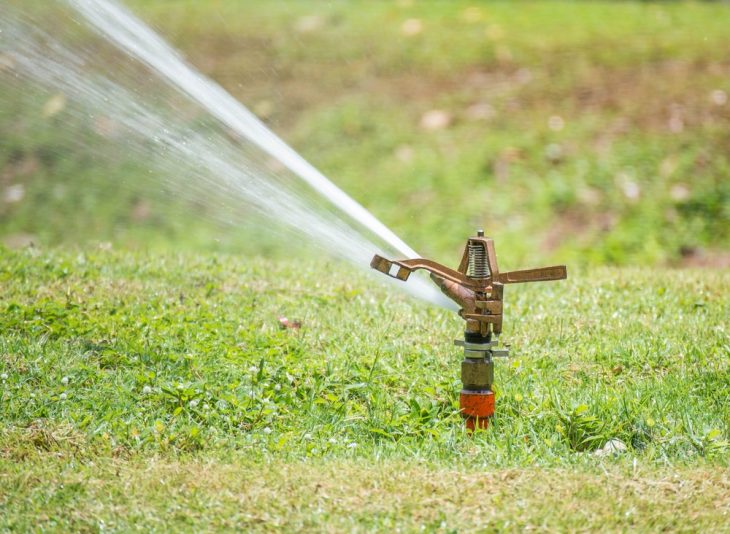







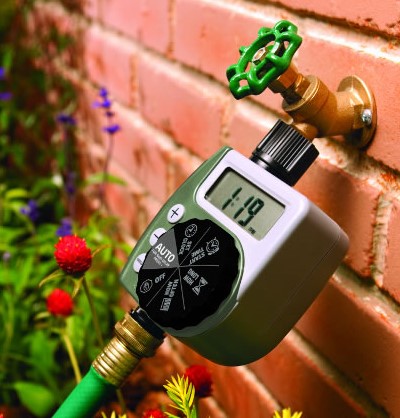

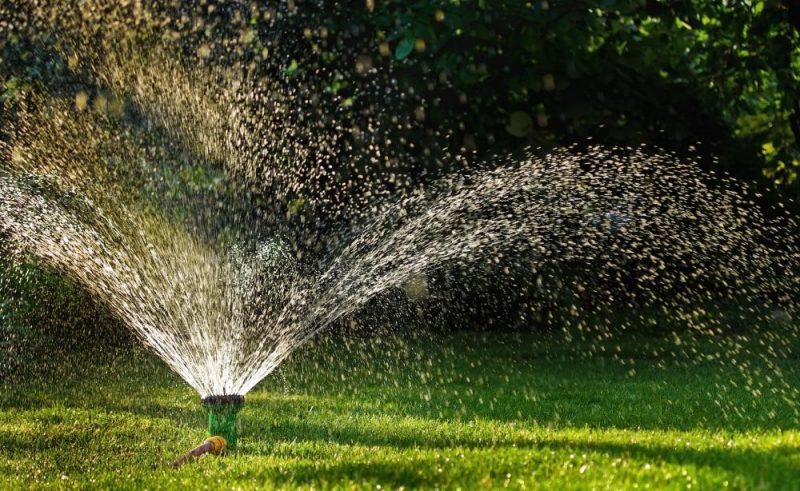
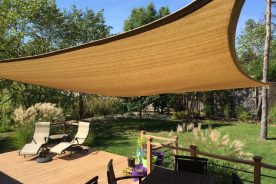

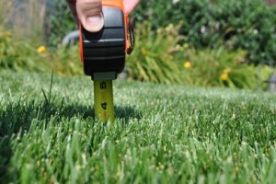

No Comments